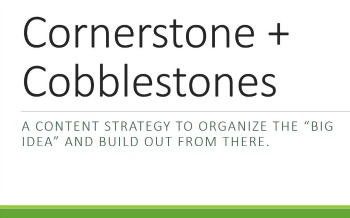I really dislike the early iterations of location-based marketing.
They’re interruptive rather than integrated. And gamification turns me off. (Seriously: being the mayor of your local coffee shop matters to you?) Then there’s the whole tweeting-about-it thing. People are all indignant about Triberr, but I find all those “I’m at…” tweets are far more irritating.
There has to be a better way to use this technology–and to get me to give up my data.
In a recent MarketingProfs Webinar, Aaron Strout and Mike Schneider talked about some of the more forward-thinking ways that companies are using location-based marketing to engage with both customers and prospects. Here are my top takeaways:
1. Showcase your smarts. USA TODAY’s foursquare page includes a “10 Great Places” feature that gives users “tips”–information on places ranging from The National Mall to the Bird Cage Theater in Tombstone, Arizona. In doing so, the media company has found a way to engage with a broad, geographically dispersed audience. I can see ways that all kinds of organizations can create campaigns that give me a reason to check in.
2. Make it participatory. Buffalo Wild Wings teamed up with SCVNGR to create a series of challenges around the 2011 NCAA Tournament. Most required small actions (a picture of the sauciest wing in the bucket, a snapshot of you with a fan of the opposing team). The campaign drew almost 200,000 unique players and 1.3 million challenges. Sure, there was a big gamification element–but it also fit the personality of both the venue and the forum (sports). If my favorite sports bar did this around the NFL playoffs, I’d probably be all over it because it’s social and it’s fun.
3. It’s not just for B2C. Strout and Schneider talked about how cybersecurity firm BreakingPoint has created a foursquare location for its conference booths and encourages check-ins via its marketing collateral. The strategy, which also includes prizes for checking in, has led to hundreds of demos with key prospects. It’s just another example of how business-to-business companies can take advantage of location-based marketing.
During their Webinar, Strout and Schneider also provided a peek into the future of location-based marketing, including passive check-ins (addressing the “interruptive” problem), location-at-point-of-sale strategies, and better use of meta data. There’s some terrific stuff here.
What creative uses of location-based marketing have you seen? What would you like to see?
Photo by sophiea (Flickr).



